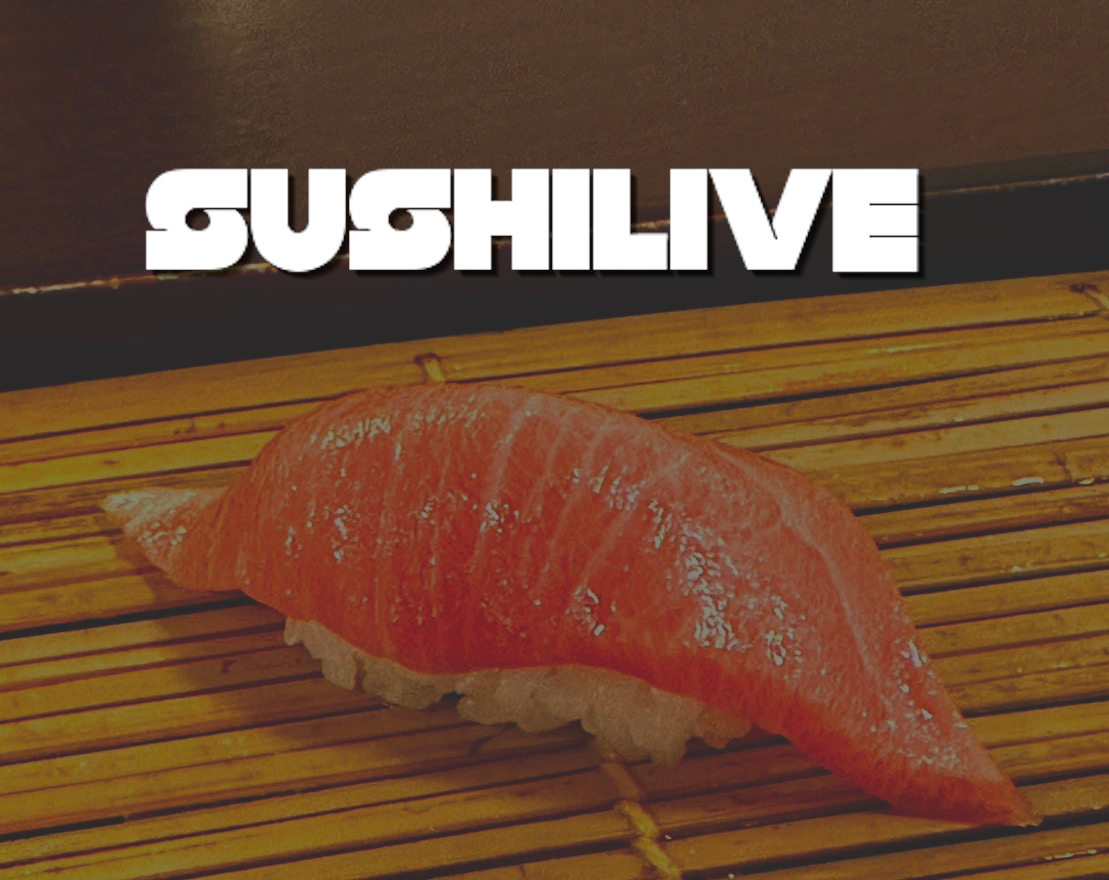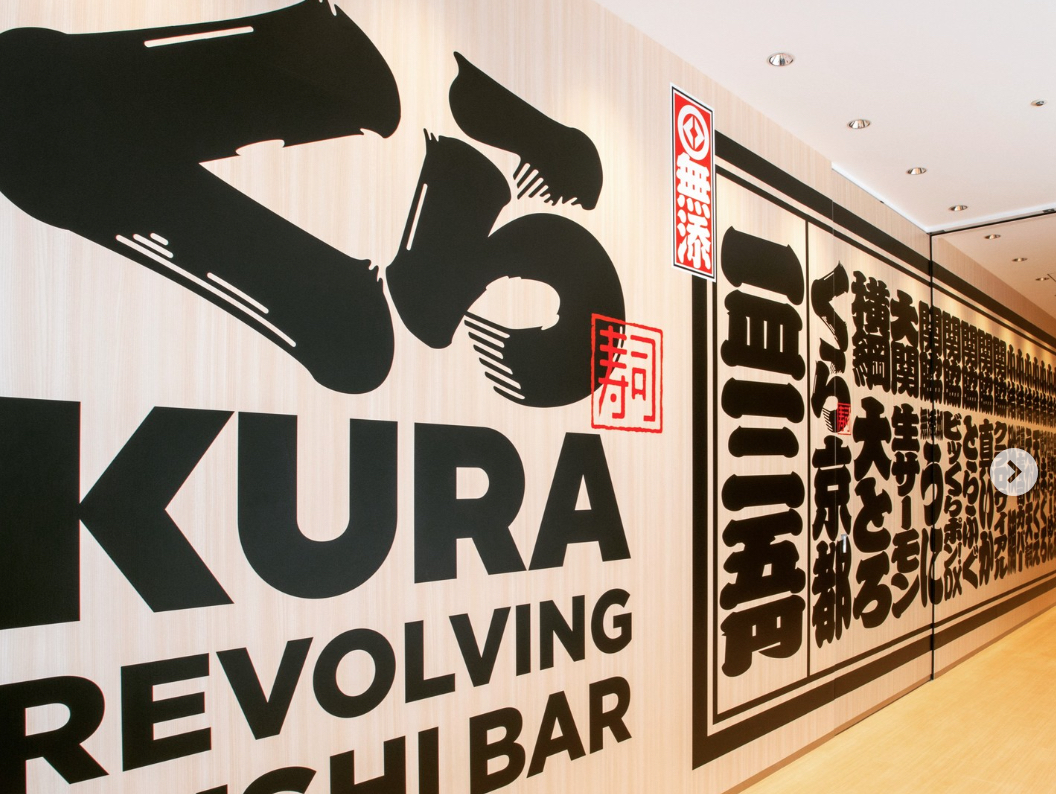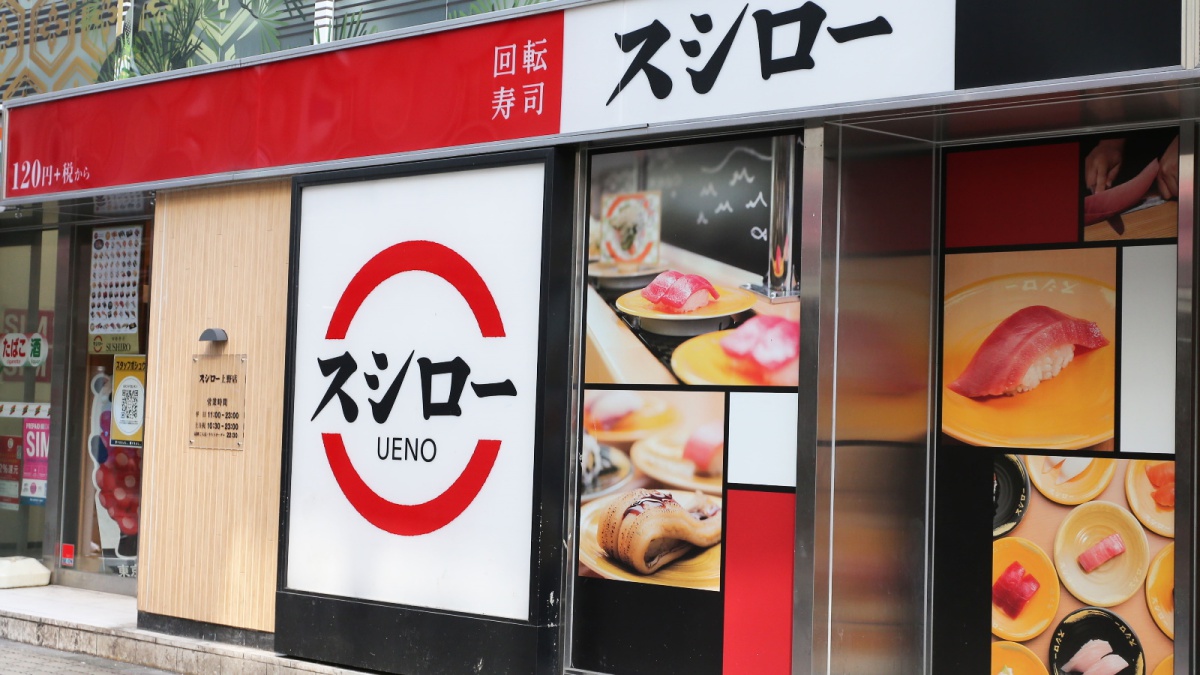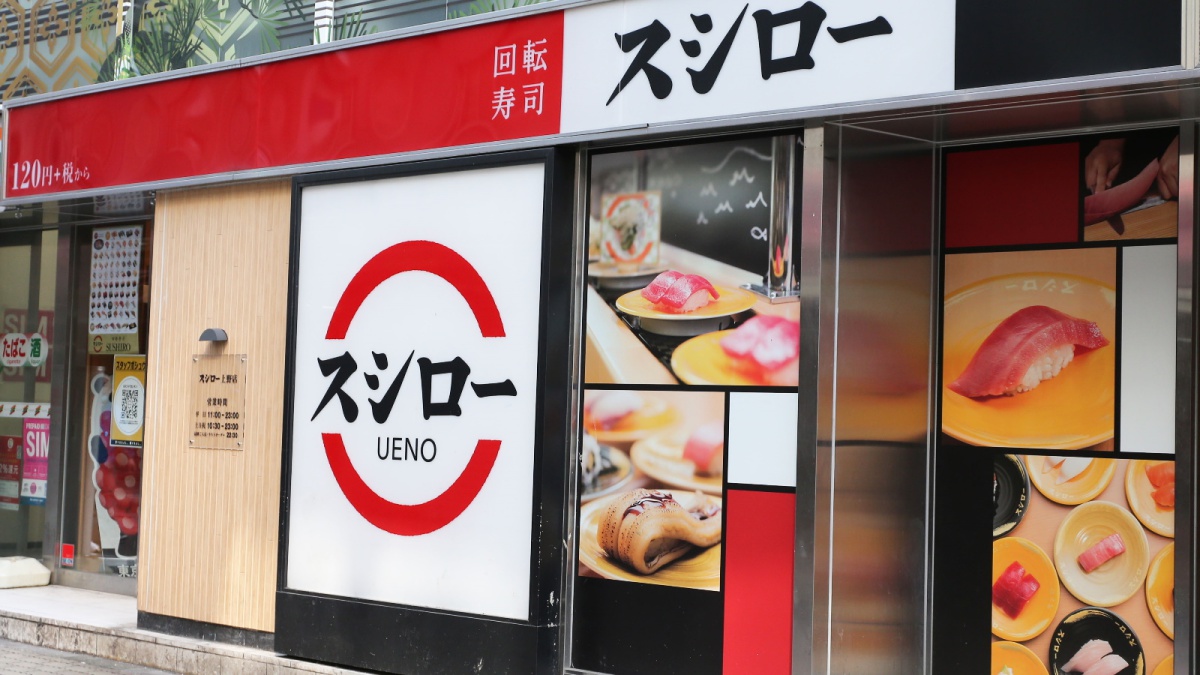Recommended sushi restaurants in Ishikawa, Japan
-

Kappou Uogin
Sushi restaurant in Ishikawa [SUSHILIVE comment] -



Sushi. A boatload.
Sushi restaurant in Ishikawa [SUSHILIVE comment] -



naturally flooded salt farm below the high-tide mark
Sushi restaurant in Ishikawa [SUSHILIVE comment] -



Sushi and Sukiyaki Akame-chan
Sushi restaurant in Ishikawa [SUSHILIVE comment] -



Katamachi Small Cuisine Sushi Sho
Sushi restaurant in Ishikawa [SUSHILIVE comment] -



Izakaya Kappou Tamura
Sushi restaurant in Ishikawa [SUSHILIVE comment] -



Gyosho An
Sushi restaurant in Ishikawa [SUSHILIVE comment] -



Sushi-Kui-Ne! Kencho-mae Branch
Sushi restaurant in Ishikawa [SUSHILIVE comment] -



Sushi-eating Kanazawa Takayanagi
Sushi restaurant in Ishikawa [SUSHILIVE comment] -



pleasant to look at
Sushi restaurant in Ishikawa [SUSHILIVE comment] -



Koubei Sushi
Sushi restaurant in Ishikawa [SUSHILIVE comment] -



Kaga Hyakumangoku no Aji GENKAN Kanazawa Ekimae Branch
Sushi restaurant in Ishikawa [SUSHILIVE comment] -



Takano Shoten Kanazawa Station Hokuriku ekiben
Sushi restaurant in Ishikawa [SUSHILIVE comment] -



Sushiro Kanazawa Arimatsu
Sushi restaurant in Ishikawa [SUSHILIVE comment] -



oxalis
Sushi restaurant in Ishikawa [SUSHILIVE comment] -



Izakaya Hachimaru Annex
Sushi restaurant in Ishikawa [SUSHILIVE comment] -



Sushi Hachimaru
Sushi restaurant in Ishikawa [SUSHILIVE comment] -



Sushi Issei
Sushi restaurant in Ishikawa [SUSHILIVE comment] -



greyish-green
Sushi restaurant in Ishikawa [SUSHILIVE comment] -



Sushi-Ryu
Sushi restaurant in Ishikawa [SUSHILIVE comment] -



Benkei.
Sushi restaurant in Ishikawa [SUSHILIVE comment] -



Sushi and Izakaya Uotami Kanazawa Katamachi
Sushi restaurant in Ishikawa [SUSHILIVE comment] -



narrow river
Sushi restaurant in Ishikawa [SUSHILIVE comment] -



Fukuji Sushi
Sushi restaurant in Ishikawa [SUSHILIVE comment] -



Shigeno
Sushi restaurant in Ishikawa [SUSHILIVE comment] -



Morimori Sushi Fujie Branch
Sushi restaurant in Ishikawa [SUSHILIVE comment] -



Noriyoshi Sushi Restaurant
Sushi restaurant in Ishikawa [SUSHILIVE comment] -



Taiko Sushi
Sushi restaurant in Ishikawa [SUSHILIVE comment] -



Konohana Kotobushi
Sushi restaurant in Ishikawa [SUSHILIVE comment] -



flying
Sushi restaurant in Ishikawa [SUSHILIVE comment]
Recommended conveyor belt sushi restaurants in Ishikawa, Japan
-



Kura Sushi Nitori Takao-dai
Sushi restaurant in Ishikawa [SUSHILIVE comment] -



Kura Sushi Kanazawa Irie Store
Sushi restaurant in Ishikawa [SUSHILIVE comment] -



Kura Sushi Komatsu Store
Sushi restaurant in Ishikawa [SUSHILIVE comment] -



Kura Sushi Matsutou Store
Sushi restaurant in Ishikawa [SUSHILIVE comment] -



Sushiro Kanazawa Arimatsu
Sushi restaurant in Ishikawa [SUSHILIVE comment] -



Sushiro Nonoichi
Sushi restaurant in Ishikawa [SUSHILIVE comment] -



Sushiro Komatsu Ariake
Sushi restaurant in Ishikawa [SUSHILIVE comment] -



Sushiro Kanazawa Station West
Sushi restaurant in Ishikawa [SUSHILIVE comment]
Characteristics of Ishikawa’s Cuisine
Ishikawa: A Beautiful Prefecture Woven from Nature, Culture, and History
Ishikawa Prefecture, located in the central part of the Hokuriku region, is a beautiful prefecture alive with nature, culture, and history. Comprising the Noto Peninsula facing the Sea of Japan, the Kaga Plain, and mountainous areas centered around Mt. Hakusan, Ishikawa offers a variety of landscapes to enjoy. The Noto Peninsula is known for its scenic coastline, the Wajima Morning Market, and terraced rice fields, embodying a unique culture. The Kaga Plain features expansive rice fields with historical castle towns, including Kanazawa. Mt. Hakusan has been a revered peak for centuries, offering opportunities for climbing and hiking.
Ishikawa is culturally rich, with a history of the Kaga Domain’s million-koku (a feudal domain’s wealth measurement) status. Tourist spots like Kanazawa Castle, Kenrokuen Garden, and the Higashi Chaya District retain the ambiance of the Edo period. Traditional crafts such as Kutani ware, Kaga Yuzen silk dyeing, and Wajima lacquerware are also actively produced here.
The prefecture is blessed with fresh seafood from the Sea of Japan and produce from the mountains. Dishes using Ishikawa’s unique ingredients, such as seafood, Kaga vegetables, and nodoguro (blackthroat seaperch), can be savored here.
When visiting Ishikawa, immerse yourself in its nature, culture, history, and cuisine. You’ll be greeted by beautiful scenery and warm-hearted people.
The Glory and Culture of Kaga’s Million-Koku
Ishikawa has long been known as Kaga’s million-koku, a land rich in history and culture. Inhabited since the Jomon period, its rice farming culture developed during the Yayoi period, and powerful clans emerged in the Kofun period.
During the Kamakura to the Muromachi period, it was under the governance of the Kaga clan. In the Sengoku period, Maeda Toshiie, a retainer of the Kaga clan, played a prominent role and was granted Kaga Province by Toyotomi Hideyoshi.
In the Edo period, the Maeda clan ruled over Kaga Domain, governing more than one million koku. It was a political, economic, and cultural powerhouse, flourishing as a city rivaling Edo, Kyoto, and Osaka.
Even after the Meiji Restoration, Ishikawa continued to thrive in academia, culture, and industry, now playing a central role in the Hokuriku region.
A visit to Ishikawa offers a deep dive into its history and culture, revealing the splendor and cultural richness of Kaga’s million-koku.
The Culinary Heritage of Kaga’s Million-Koku
Ishikawa’s cuisine is nurtured by its rich natural environment, blessed with the sea’s bounty and mountain’s harvest. Fresh seafood from the Sea of Japan, agricultural products from the Kaga Plain, and mountain vegetables define the prefecture’s dining table.
Ishikawa boasts numerous traditional local dishes, such as jibuni, Kaga vegetable dishes, and nodoguro dishes. Jibuni, reportedly invented by Maeda clan retainer Okumura Jibueimon, highlights Kaga vegetables, traditionally cultivated since the Edo period. Nodoguro is a prized fish caught off Ishikawa’s coast.
Recently, alongside traditional dishes, new culinary styles have also gained popularity, with young chefs creating innovative dishes using Ishikawa’s abundant ingredients.
Ishikawa’s cuisine isn’t just food; it embodies the prefecture’s culture, born from its rich nature and the lives of its people.
The Rich Sushi Culture Nurtured by Kaga’s Million-Koku
Ishikawa’s sushi culture, part of its affluent heritage from the era of Kaga’s million-koku, is distinguished by its traditional pressed sushi. The famous “jibuni sushi,” a type of pressed sushi, is believed to have been invented by Okumura Jibueimon, a retainer of the Maeda clan.
Various types of pressed sushi exist in Ishikawa, featuring mackerel, yellowtail, and nodoguro, among others. Recently, in addition to traditional styles, innovative sushi creations are also emerging, with young sushi chefs leveraging Ishikawa’s rich ingredients to craft new sushi experiences.
Exploring Ishikawa, discover your favorite sushi restaurant and indulge in the region’s sushi offerings. Enjoy a journey of taste where tradition meets innovation, a true reflection of Ishikawa’s culture.
Ishikawa’s Treasures: Exquisite Local Specialties Cultivated by Kaga’s Million-Koku
Ishikawa, a land rich in nature and history, boasts a range of exquisite local specialties. From the Sea of Japan, fresh seafood like the winter delicacy “kan-buri” (winter yellowtail), the gem-like “shiroebi” (white shrimp), and the luxurious “nodoguro” are renowned. “Kaga vegetables,” traditional vegetables cultivated since the Edo period, and the branded rice “hyakumangoku” are among its famous agricultural products.
Traditional crafts such as Kutani ware, Kaga Yuzen, and Wajima lacquerware highlight the region’s artistic heritage. Kutani ware is known for its vibrant and elaborate designs, Kaga Yuzen for its delicate dyeing techniques, and Wajima lacquerware for its luxurious lacquered woodwork.
Visiting Ishikawa, explore these local specialties firsthand. Experience the treasures cultivated by the history and culture of Kaga’s million-koku, each shining with unparalleled brilliance.

